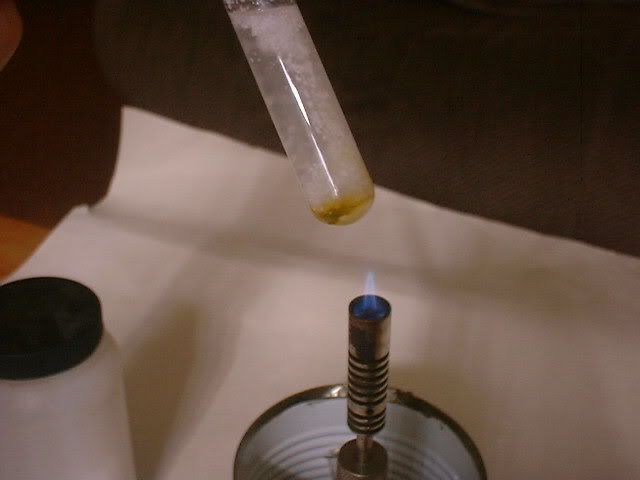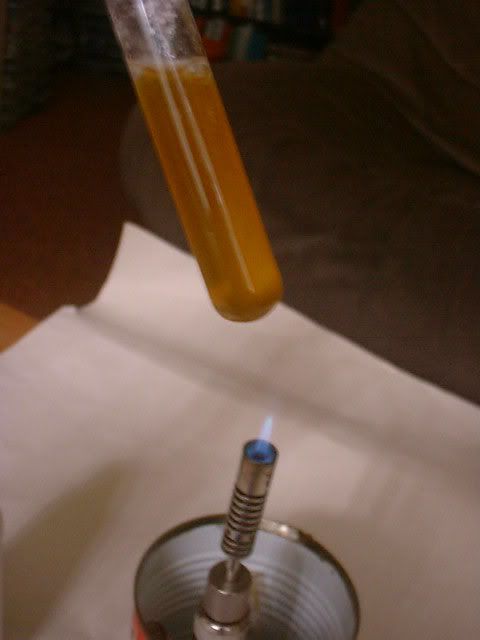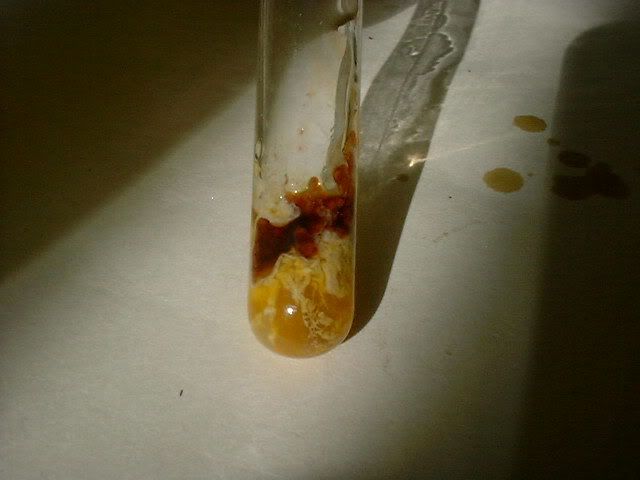Originally posted by not_important
If you want to try, you should first dissolve the aspirin in boiling water, filter to get rid of most of the other stuff used to make the tablets, and
cool to let the acetal salicylic acid,/ salicylic acid, to crystallize out. And use uncoated aspirin. |




 Maybe for interest's sake I could try NaOH with starch or lactose one day and see if it goes yellow.
Maybe for interest's sake I could try NaOH with starch or lactose one day and see if it goes yellow.